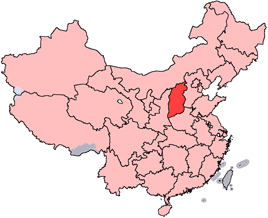CaliforniaDisasters California's Earthquake Forum Geology2 AllThingsHistory
Jan 26 at 9:37 PM
Cascadia Subduction Zone
1700 01 26
Magnitude ~9
This earthquake, the largest known to have occurred in the "lower 48" United States, rocked Cascadia, a region 600 miles long that includes northern California, Oregon, Washington, and southern British Columbia. The earthquake set off a tsunami that not only struck Cascadia's Pacific coast, but also crossed the Pacific Ocean to Japan, where it damaged coastal villages. Written records of the damage in Japan pinpoint the earthquake to the evening of January 26, 1700.
The M9 Cascadia Megathrust Earthquake of January 26, 1700
CaliforniaDisasters California's Earthquake Forum Geology2 AllThingsHistory
Today at 6:50 AM
The M9 Cascadia Megathrust Earthquake of January 26, 1700
At 9PM on January 26, 1700 one of the world's largest earthquakes occurred along the west coast of North America. The undersea Cascadia thrust fault ruptured along a 1000 km length, from mid Vancouver Island to northern California in a great earthquake, producing tremendous shaking and a huge tsunami that swept across the Pacific. The Cascadia fault is the boundary between two of the Earth's tectonic plates: the smaller offshore Juan de Fuca plate that is sliding under the much larger North American plate.
The earthquake shaking collapsed houses of the Cowichan people on Vancouver Island and caused numerous landslides. The shaking was so violent that people could not stand and so prolonged that it made them sick. On the west coast of Vancouver Island, the tsunami completely destroyed the winter village of the Pachena Bay people with no survivors. These events are recorded in the oral traditions of the First Nations people on Vancouver Island. The tsunami swept across the Pacific also causing destruction along the Pacific coast of Japan. It is the accurate descriptions of the tsunami and the accurate time keeping by the Japanese that allows us to confidently know the size and exact time of this great earthquake.
The earthquake also left unmistakeable signatures in the geological record as the outer coastal regions subsided and drowned coastal marshlands and forests that were subsequently covered with younger sediments. The recognition of definitive signatures in the geological record tells us the January 26, 1700 event was not a unique event, but has repeated many times at irregular intervals of hundreds of years. Geological evidence indicates that 13 great earthquakes have occurred in the last 6000 years.
We now know that a similar offshore event will happen sometime in the future and that it represents a considerable hazard to those who live in southwest B.C. However, because the fault is offshore, it is not the greatest earthquake hazard faced by major west coast cities. In the interval between great earthquakes, the tectonic plates become stuck together, yet continue to move towards each other. This causes tremendous strain and deformation of the Earth's crust in the coastal region and causes ongoing earthquake activity. This is the situation that we are in now. Some onshore earthquakes can be quite large (there have been four magnitude 7+ earthquakes in the past 130 years in southwest B.C. and northern Washington State). Because these inland earthquakes can be much closer to our urban areas and occur more frequently, they represent the greatest earthquake hazard. An inland magnitude 6.9 earthquake in 1995 in a similar geological setting beneath Kobe, Japan caused in excess of $200 billion damage.
Source:
http://www.earthquakescanada.nrcan.gc.ca/histor/15-19th-eme/1700/1700-eng.php
Tonight at about 9 P.M. in the year 1700 the Great Cascadia Earthquake of January 26, 1700, rocked the region that would become to be known as the Pacific Northwest, a quake that was perhaps as large as the 2004 Indian Ocean Earthquake. This quake, which ruptured a mega-thrust fault zone that runs from Cape Mendocino in Northern California northwards to Vancouver, British Columbia triggered a Pacific-wide tsunami that struck the coast of Japan where it was recorded as an "orphan tsunami" as there was no quake in Japan to which the Japanese could connect it. Although the only inhabitants of the epicenter region were pre-Columbian aboriginal peoples (First Nations) they also kept a record of this event in their oral traditions and both this record and the Japanese one are supported by ample multidisciplinary scientific evidence which all blends together to tell a frightening tale of Winter nighttime terror starting with sound and motion and ending with cold frothy dark waters. How large the tsunamis were that struck that night is anybody's guess but one can assume that they averaged at least in the 30 foot or higher run-up range with some zones hit with higher run-ups than others. There can be no doubt that most if not all of the area that would later come to be known as California felt this quake whose shaking would have gone on for several minutes or more. There can also be no doubt that the entire length of the future California coast was struck by dangerous if not deadly tsunami run-ups given the height of the run-ups resulting from the Great Alaska Quake of March, 1964, which was much further away. When this event happens again, IF our civilization is still here when it happens it will be devastating and deadly and cause damage and upheaval perhaps on a level not seen in our nation since the Civil War.
[californiadisasters] 1700 Cascadia Great Earthquake, Tuesday, 27 January 2015




